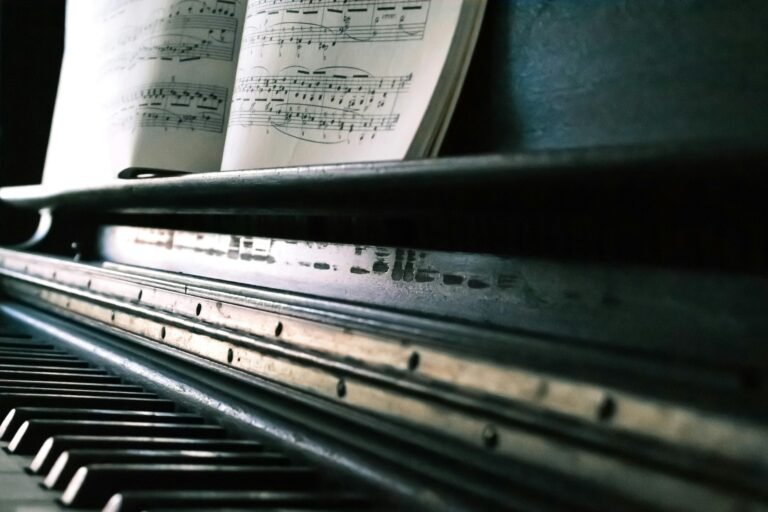“The Blessing” is one of the most popular contemporary worship songs that has touched hearts worldwide. Its message of hope, protection, and God’s favor makes it not only a spiritual anthem but also a favorite for church musicians. If you are a guitarist, pianist, or worship leader, understanding The Blessing chords is essential to perform this song accurately.
In this guide, I’ll walk you through the chord structure, provide tips for beginners, share personal experiences on performing it, and explain variations that can enhance your worship sessions.
What Are “The Blessing Chords”?
Chords are the building blocks of music, and for “The Blessing,” they create a warm, uplifting sound that complements its lyrical message. Typically, the song is played in a simple key, making it accessible for beginners while still resonant for advanced musicians.
The song uses a combination of major and minor chords that evoke a sense of peace, joy, and hope. When played correctly, the chords flow seamlessly with the lyrics, enhancing the emotional impact.
Basic Chord Progression
For most worship settings, the basic chord progression of “The Blessing” is:
Verse & Chorus:
D – A – Bm – G
Bridge:
Em – A – D – G
Here’s a breakdown:
- D major – Opens the song with a bright, uplifting tone.
- A major – Adds a sense of movement and anticipation.
- Bm minor – Brings depth and emotional resonance.
- G major – Resolves phrases smoothly, giving a sense of completion.
- Em minor – Often used in the bridge for reflective moments.
I personally find that practicing the verse and chorus progression repeatedly helps in mastering the transitions before attempting the bridge.
Tips for Beginners
- Start Slow – Play each chord slowly to ensure clean transitions.
- Use a Capo – If the original key is too high for your vocal range, placing a capo on the 2nd fret can help.
- Strumming Pattern – A simple down-down-up-up-down pattern works well for beginners.
- Practice with a Metronome – Keeping rhythm consistent is crucial, especially during live worship sessions.
I remember the first time I played “The Blessing” in a small youth group. Using a capo and slowing down the tempo allowed me to play confidently, even as I was still memorizing the chords.
Advanced Chord Variations
For more experienced players, you can add variations to make the song more dynamic:
- Suspended chords (Dsus4, Asus4) – Add tension and release in transitions.
- Seventh chords (A7, Bm7) – Bring richer harmony to the song.
- Fingerpicking style – Instead of strumming, arpeggiating the chords can create a more intimate worship atmosphere.
These variations work especially well in small groups or acoustic sessions, giving the song a unique texture.
Playing Tips for Worship Leaders
- Listen to the Original – Familiarize yourself with the recording to capture the nuances of timing and chord emphasis.
- Encourage Congregational Participation – Start slow, then gradually build energy as the congregation joins in.
- Combine Instruments – Adding a keyboard or acoustic guitar alongside the main chords enhances fullness.
From my experience leading worship with this song, gradually layering instruments helps create a build-up that resonates deeply during the chorus.
Common Mistakes to Avoid
- Rushing Chord Changes – Take your time; smooth transitions are better than fast, sloppy ones.
- Ignoring Dynamics – The song’s impact comes from soft verses and stronger choruses.
- Overcomplicating Strumming – Simple strumming keeps the focus on the lyrics and worship experience.
Remember, the song is about worship, not technical perfection.
Conclusion
“The Blessing chords” provide a foundation for both beginners and experienced musicians to deliver a powerful worship experience. By learning the basic progression, practicing slowly, and experimenting with variations, you can perform the song confidently and meaningfully.
Whether in a church setting, small group, or personal worship, mastering these chords allows you to participate fully in the message of hope, favor, and God’s presence that the song conveys.
FAQs
Q1: What key is “The Blessing” originally in?
The original recording is in D major, but you can use a capo to adjust for your vocal range.
Q2: Can beginners play “The Blessing”?
Absolutely. The song uses simple chord progressions suitable for beginners.
Q3: Are there other ways to play it on guitar?
Yes, using suspended chords, seventh chords, or fingerpicking patterns adds variety.
Q4: How do I make it suitable for a church congregation?
Start slowly, encourage participation, and layer instruments gradually.
Q5: Where can I find chord charts or tutorials?
You can find tutorials on YouTube, music sheets on church music websites, and free chord charts online.

